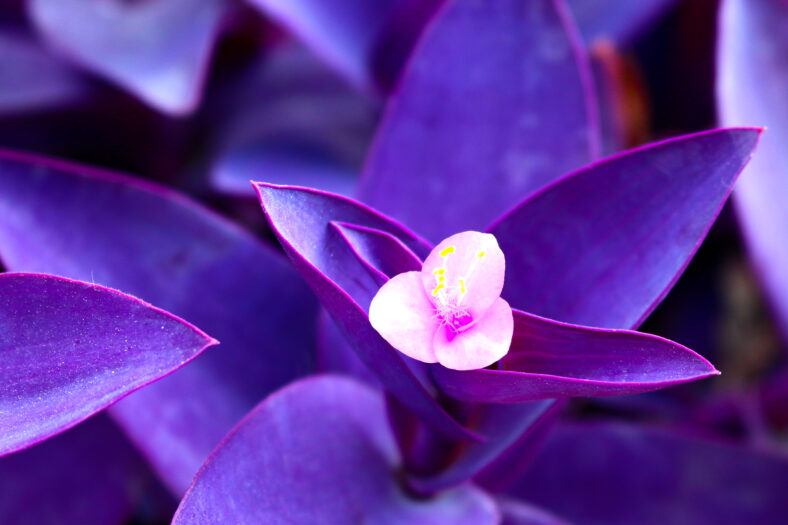How You Can Care For A Purple Heart Plant, Which Will Make A Striking Statement In Your Home

If you want to add some unique color and texture to your home or garden, look no further than the purple heart plant.
Known for its vibrant, dark purple leaves and cascading vines, this easy-to-grow beauty makes a striking statement both indoors and outdoors.
The purple heart plant is native to Mexico and thrives in a variety of settings, from lush houseplant collections to sunny garden beds and even as a ground cover. It produces small pink flowers from summer to fall and is regarded as a fast-growing species.
Whether you’re a seasoned gardener or a beginner, caring for the purple heart plant is simple. Here’s everything you need to know to help it flourish.
How To Care For The Purple Heart Plant
First, the purple heart plant is quite adaptable to various temperatures but is still sensitive to frost. Given how it originates from tropical and subtropical regions, it also thrives in high humidity.
Those with homes on the drier side should consider using a humidifier or placing their plant in the bathroom or kitchen for more moisture since dry air can cause the leaves to wilt and lose their firmness.
Next, purple heart plants prefer soil that’s light, well-draining, and moist. It can handle a range of pH levels, from slightly acidic to slightly alkaline. Just ensure the soil has good drainage to prevent water-logging.
You typically won’t need to fertilize your plant, either, but it can benefit from occasional feeding. If you opt to use fertilizer, dilute the solution to half of its usual strength.

Sign up for Chip Chick’s newsletter and get stories like this delivered to your inbox.
To encourage vibrant purple stems, it’s best to place your purple heart plant in full sun. Yes, it can tolerate partial shade, but the stems may turn green instead of purple in lower light.
Also, it’s recommended to gradually introduce purple heart plants to brighter conditions because sudden exposure to direct sunlight may cause the leaves to burn.
Finally, this variety is drought-tolerant and doesn’t need frequent watering, making it ideal for busy plant parents.
Still, for optimal growth, don’t let the plant go too long without a drink. So, when the soil dries out, thoroughly water it.
You can keep your purple heart plant from becoming leggy by pruning it when the stems start to grow too long. This should be done during the warmer months after it’s finished blooming. Remember to wear gloves as well since the sap can cause skin irritation or burns.
And while it’s a resilient plant, it may still attract caterpillars and snails and be susceptible to pests such as vine weevils, aphids, scales, and mealybugs when grown outdoors.
To protect your purple heart plant, you can consider adding a layer of wood chips, gravel, or diatomaceous earth around it.
More About:Gardening





